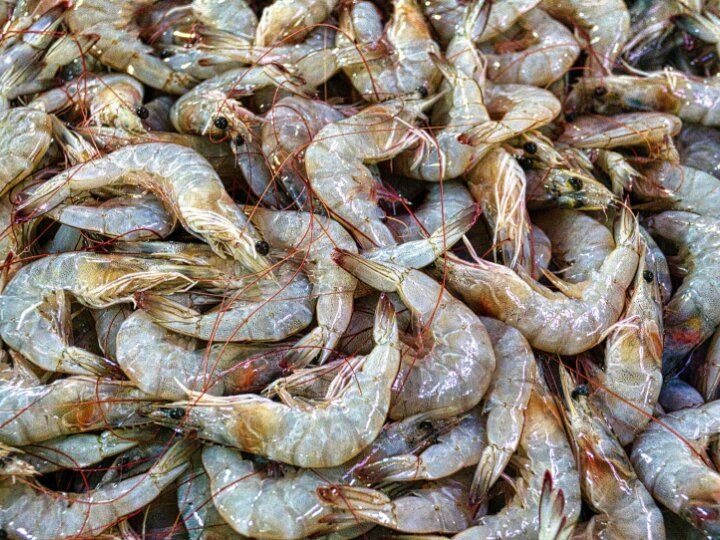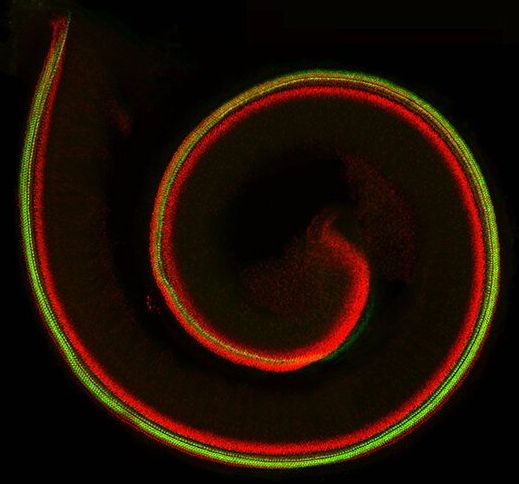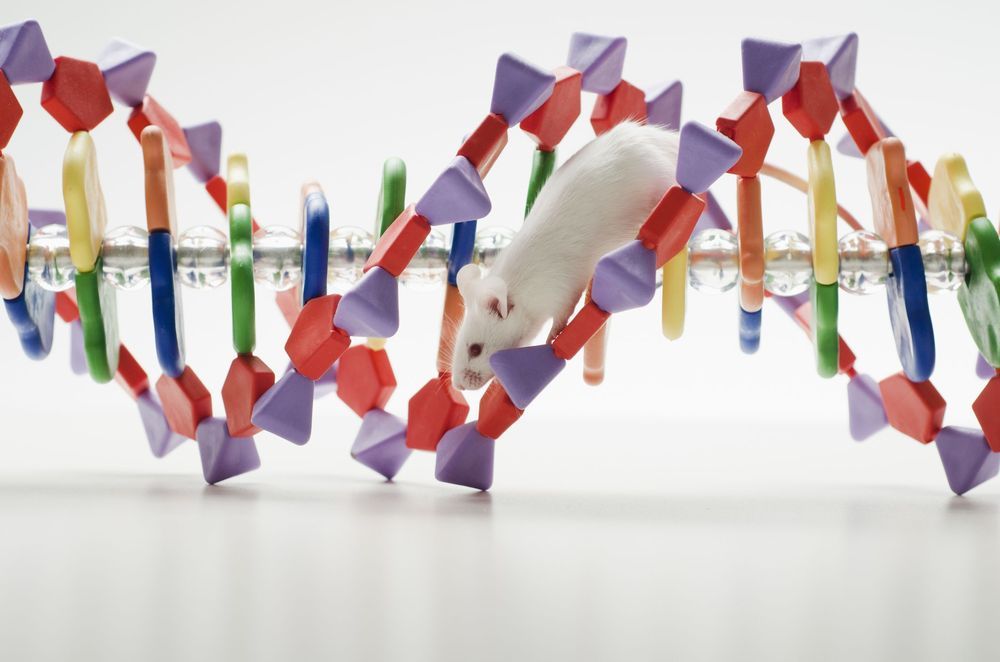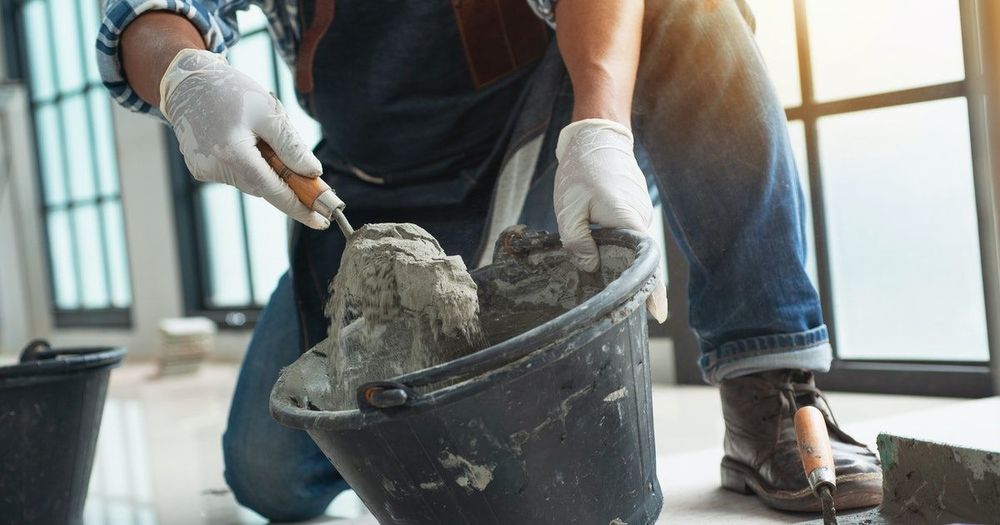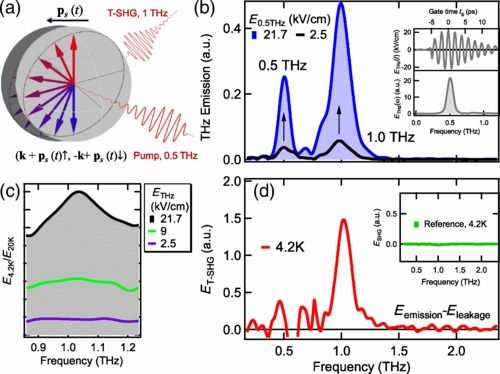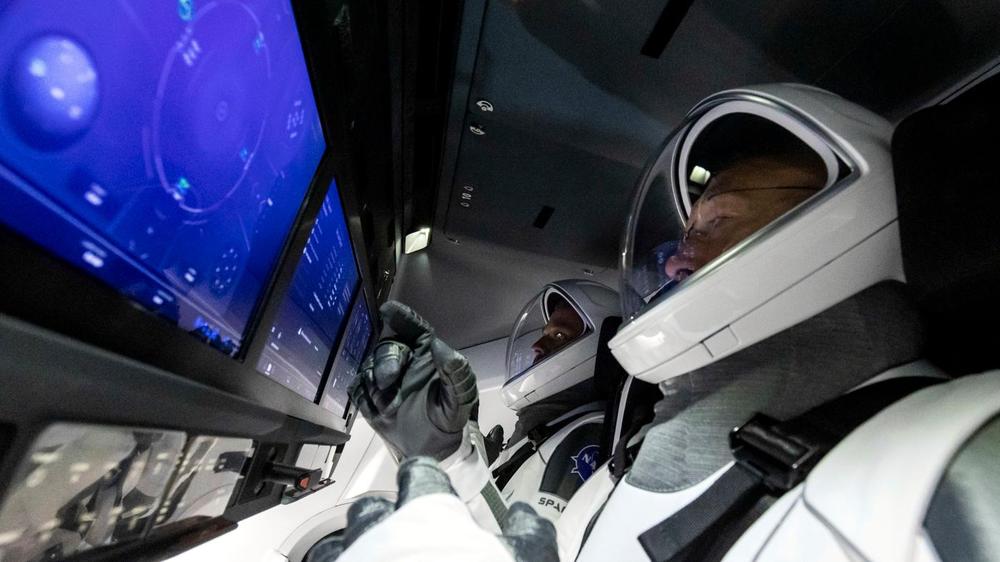Shrimp, lobsters and mushrooms may not seem like great tools for the battlefield, but three engineers from the University of Houston are using chitin—a derivative of glucose found in the cellular walls of arthropods and fungi—and 3D printing techniques to produce high-impact multilayered coatings that can protect soldiers against bullets, lasers, toxic gas and other dangers.
It turns out that to hear a person yapping, you need a protein called Yap. Working as part of what is known as the Yap/Tead complex, this important protein sends signals to the hearing organ to attain the correct size during embryonic development, according to a new study published in the Proceedings of the National Academy of Sciences (PNAS) from the USC Stem Cell laboratory of Neil Segil.
In addition, the mice developed interstitial pneumonia, which affects the tissue and space around the air sacs of the lungs, causing the infiltration of inflammatory cells, the thickening of the structure that separates air sacs, and blood vessel damage. Compared with young mice, older mice showed more severe lung damage and increased production of signaling molecules called cytokines. Taken together, these features recapitulate those observed in COVID-19 patients.
When the researchers administered SARS-CoV-2 into the stomach, two of the three mice showed high levels of viral RNA in the trachea and lung. The S protein was also present in lung tissue, which showed signs of inflammation. According to the authors, these findings are consistent with the observation that patients with COVID-19 sometimes experience gastrointestinal symptoms such as diarrhea, abdominal pain, and vomiting. But 10 times the dose of SARS-CoV-2 was required to establish infection through the stomach than through the nose.
Future studies using this mouse model may shed light on how SARS-CoV-2 invades the brain and how the virus survives the gastrointestinal environment and invades the respiratory tract. “The hACE2 mice described in our manuscript provide a small animal model for understanding unexpected clinical manifestations of SARS-CoV-2 infection in humans,” concluded co-senior study author Chang-Fa Fan of NIFDC. “This model will also be valuable for testing vaccines and therapeutics to combat SARS-CoV-2.”
In August of 1953, a British-built Centurion tank drove through the brutal desert terrain of South Australia, its destination a parking spot a few hundred yards from an atomic bomb test. That was just the beginning of this tank’s amazing, and perhaps tragic, operational life.
Researchers have designed a new way to make concrete that would make frustrating cracks a thing of the past.
In the late 1990s, cosmologists made a prediction about how much ordinary matter there should be in the universe. About 5%, they estimated, should be regular stuff with the rest a mixture of dark matter and dark energy. But when cosmologists counted up everything they could see or measure at the time, they came up short. By a lot.
As Internet of Things (IoT) devices rapidly increase in popularity and deployment, economic attackers and nation-states alike are shifting their attention to the vulnerabilities of digital integrated circuit (IC) chips. Threats to IC chips are well known, and despite various measures designed to mitigate them, hardware developers have largely been slow to implement security solutions due to limited expertise, high cost and complexity, and lack of security-oriented design tools integrated with supporting semiconductor intellectual property (IP). Further, when unsecure circuits are used in critical systems, the lack of embedded countermeasures exposes them to exploitation. To address the growing threat this poses from an economic and national security perspective, DARPA developed the Automatic Implementation of Secure Silicon (AISS) program. AISS aims to automate the process of incorporating scalable defense mechanisms into chip designs, while allowing designers to explore chip economics versus security trade-offs based on the expected application and intent while maximizing designer productivity.
Today, DARPA is announcing the research teams selected to take on AISS’ technical challenges. Two teams of academic, commercial, and defense industry researchers and engineers will explore the development of a novel design tool and IP ecosystem – which includes tool vendors, chip developers, and IP licensors – allowing, eventually, defenses to be incorporated efficiently into chip designs. The expected AISS technologies could enable hardware developers to not only integrate the appropriate level of state-of-the-art security based on the target application, but also balance security with economic considerations like power consumption, die area, and performance.
“The ultimate goal of the AISS program is to accelerate the timeline from architecture to security-hardened RTL from one year, to one week – and to do so at a substantially reduced cost,” said the DARPA program manager leading AISS, Mr. Serge Leef.
A nuclear periodic table
Posted in chemistry, particle physics
There has been plenty of empirical evidence which shows that the single-particle picture holds to a good approximation in atomic nuclei. In this picture, protons and neutrons move independently inside a mean-field potential generated by an interaction among the nucleons. This leads to the concept of nuclear shells, similar to the electronic shells in atoms. In particular, the magic numbers due to closures of the nucleonic shells, corresponding to noble gases in elements, have been known to play an important role in nuclear physics. Here we propose a periodic table for atomic nuclei, in which the elements are arranged according to the known nucleonic shells. The nuclear periodic table clearly indicates that nuclei in the vicinity of the magic numbers can be understood in terms of a shell closure with one or two additional nucleons or nucleon holes, while nuclei far from the magic numbers are characterized by nuclear deformation.
We report terahertz (THz) light-induced second harmonic generation, in superconductors with inversion symmetry that forbid even-order nonlinearities. The THz second harmonic emission vanishes above the superconductor critical temperature and arises from precession of twisted Anderson pseudospins at a multicycle, THz driving frequency that is not allowed by equilibrium symmetry. We explain the microscopic physics by a dynamical symmetry breaking principle at sub-THz-cycle by using quantum kinetic modeling of the interplay between strong THz-lightwave nonlinearity and pulse propagation. The resulting nonzero integrated pulse area inside the superconductor leads to light-induced nonlinear supercurrents due to subcycle Cooper pair acceleration, in contrast to dc-biased superconductors, which can be controlled by the band structure and THz driving field below the superconducting gap.
Still, commercial crew has managed to move faster and stay on budget compared to other NASA projects which explicitly eschew private capital and insist that NASA is the only suitable customer for their wares. The agency estimates it saved as much as $30 billion by building its new spacecraft this way.
What if THIS is the most important thing that happens in 2020?
